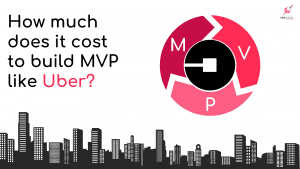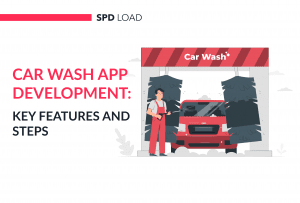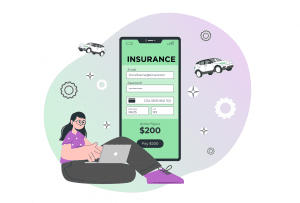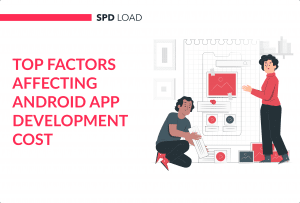Taxi App Development Secrets: Build Smarter, Faster, Better
- Updated: Jan 31, 2025
- 15 min
The taxi app development journey is exciting, but like any business, it starts with solid research.
In this article, we will explore everything you need to know about effective taxi app development.
Starting from demand analysis, trends, and competition to must-have features, development, and choosing revenue models, we will cover all the aspects of successful taxi booking app development.
And, of course, we will explore the cost of taxi app development and how to find a reliable partner.
Let’s go!
Explore our app development services today
Demand Analysis: Is There Room for Your Taxi Booking App?
Taxi booking app development starts with identifying market opportunities.
You need to conduct thorough market research to see if taxi booking services are popular in both your area and globally.
The global ride-hailing market is booming.
In 2024, its market size was valued at $160.09 billion.
It’s expected to grow at a compound annual growth rate (CAGR) of 15.7% from 2024 to 2030.
There are several major factors that contribute to this growth.
Among them are:
- Convenience
Consumers increasingly value on-demand, app-based solutions over traditional taxi services.
- Adoption of New Technologies
Using tools like AI and digital payments makes the whole ride experience faster and smoother.
- First and Last Mile Connectivity
Ride-hailing services are great for bridging the gap between public transit and home or work.
- Autonomous Vehicles
Self-driving cars could change the game as they make rides cheaper and more efficient in the future. 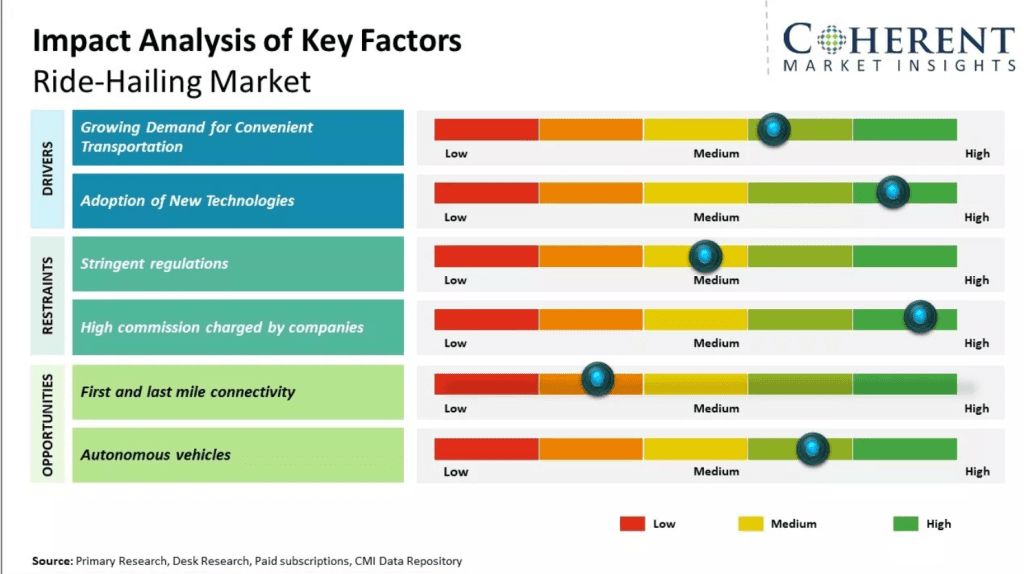
Emerging markets like Southeast Asia, Africa, and parts of Latin America are particularly ripe for growth due to limited competition and rising smartphone adoption.
If you’re targeting the U.S., note that Uber dominates with around 71% of the market share.
However, smaller cities still have room for new players offering tailored solutions.
Now that you have explored the global market opportunities, let’s narrow down the search.
First things first — how popular are taxi apps in your area?
You want to explore local trends, gaps in service, and user preferences.
Check how people currently get around. Are they using apps like Uber or still relying on traditional cabs? Google Trends and social media can offer a quick snapshot of what’s buzzing.
And don’t hesitate to talk to people!
Surveys or quick interviews with potential users can reveal what they love or dislike about their current options.
For example, at the end of your market research, you can discover that people in a specific area are tired of long wait times or prefer environmentally-friendly rides.
That’s a golden opportunity for your taxi booking business!
Competitor Analysis: Learn from the Best (and Worst)
The next step in taxi app development is competitor analysis.
Your competitors can teach you a lot.
Grab a notebook and explore:
- Download Their Apps
Play around with apps like Uber, Bolt, or Lyft. What features stand out? What’s missing or frustrating?
- Read Reviews
Scroll through app stores and forums to see what users are saying. Look for patterns in complaints— maybe it’s poor customer service or surge pricing that drives people away.
- Compare Features
Are competitors offering something unique, like pet-friendly rides or family accounts? Use this to inspire your app’s offerings.
The goal isn’t just to mimic what other taxi app solutions do well — it’s to outshine them by solving problems they haven’t.
Benefits of Taxi App Development for Businesses
Taxi app development can help businesses increase their revenue and reduce costs.
A well-designed taxi app can provide a competitive advantage and help businesses stand out in the market.
Let’s see why is taxi app development a profitable business idea.
- Steady Revenue Streams
Most ride-hailing apps generate income through:
-
- Commissions from rides (15–30%).
- Subscription models for premium features.
- Surge pricing during high-demand periods.
- Partnerships with businesses for employee transportation.
We will explore different revenue models further in this article.
- High Demand, Low Overheads
You’re not buying cars; drivers use their own vehicles. This asset-light model makes scaling more affordable compared to traditional taxi companies.
- Consumer Preferences
Younger, tech-savvy generations prefer app-based solutions for their flexibility, ease, and cashless experience.
Unlock your SaaS potential now — start transforming your vision into a scalable solution with our expert developers today!
Key Features of a Successful Taxi App
Here are some must-have features we would recommend implementing for your taxi app development project:
| Key Feature | Description |
|---|---|
| Real-Time GPS Tracking |
|
| Secure Payment Integration |
|
| Driver and Passenger Profiles |
|
| In-App Communication |
|
| Rating and Feedback System |
|
| Ride Scheduling |
|
| Multi-Language Support |
|
| Emergency SOS Button |
|
| Fare Estimation |
|
| Dynamic Pricing Algorithms |
|
| Fleet Management Dashboard |
|
| Driver Incentives and Rewards |
|
| Multi-Ride and Carpooling Options |
|
| Push Notifications |
|
| Promo Codes and Discounts |
|
| Ride Cancellation Options |
|
| Advanced Analytics |
|
| Electric and Hybrid Vehicle Support |
|
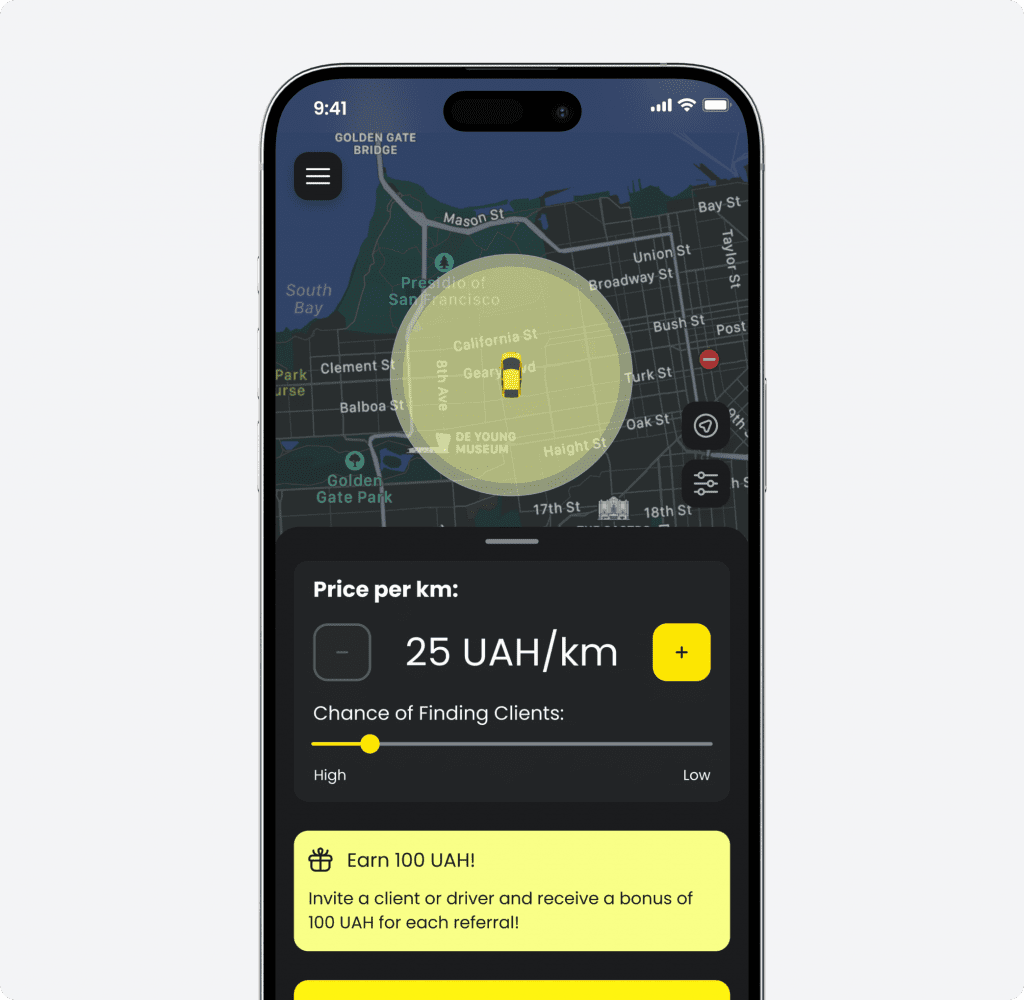
Development Process for a Taxi Booking App
As a taxi app development company, we break down the development process into several stages.
These include requirement gathering, user interface design, development, testing, launch, maintenance and support.
Let’s break down each stage.
Stage 1. Initial Consultation and Requirement Gathering
We kick off taxi app development with a meeting where we learn your needs and goals.
During this conversation, we ask you about what you want to achieve with your app.
One of the main things that identifies us among other booking app development companies out there is our deep project discovery phase expertise.
You don’t need an entire business plan with detailed market research and target audience surveys. We can do it for you.
This is a crucial first step, and we make sure it is done right.
Here is what it consists of:
- Understanding Your Market
We research what your users need and what gaps exist in the taxi booking app market.
Do people in your target area prefer cash payments? What are your competitors’ weak points?
- Defining Your Goals
Together, we decide what your app should achieve. Is it targeting affordable rides, eco-friendly travel, or luxury services?
- Listing Essential Features
We start small. Your first version (MVP) of the online taxi booking app should include the basics: ride booking, payments, and tracking.
Whether you’re a startup or a seasoned pro, this guide on MVP design will save you time and money.
- Budget and Timeline
Then, we work out how much you can invest and when you want to launch.
Without proper planning, you risk wasting time and money on features or decisions that don’t align with your goals or market needs.
Designing the User Interface and Experience
Then, it’s time to design the user interface. Our UX UI design services are focused on keeping your taxi booking app simple and useful.
The design is your app’s first impression.
If it’s not user-friendly, passengers and drivers won’t stick around.
Custom taxi booking app design consists of creating wireframes, UI, and UX.
Wireframes are the blueprint for your app.
Our designers map out what each screen will look like, like showing where the “Book a Ride” button will be.
User Interface (UI) Design is how your app looks — colors, fonts, and icons. A clean, modern design builds trust.
For example, Uber’s minimalistic design makes it easy to navigate.
User Experience (UX) focuses on how users interact with the app. Can they book a ride in three taps? Do they always know what to do next?
By the end of this stage, you will be able to see what your future app will look like, and how your users will interact with it.
Check out an example of taxi booking app wireframes we have designed recently. 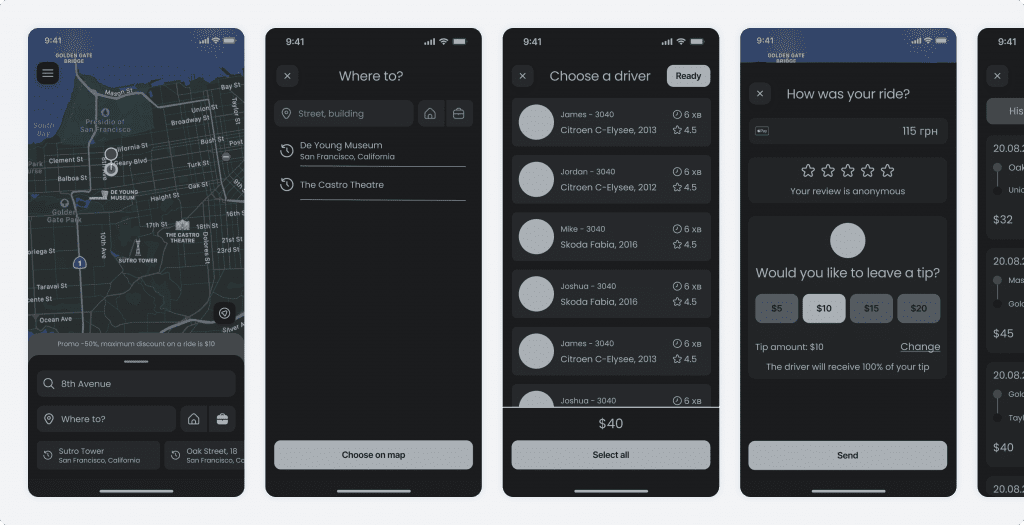
Feel free to explore the full collaboration story for the taxi app redesign.
Stage 3. Developing the Taxi App
The next in the taxi app development process is when we build the app.
This is where the magic happens.
Our skilled taxi app developers turn ideas and designs into a working app.
The development consists of several phases.
During the first phase, we develop MVP, building the must-have features first.
These are:
- Ride booking system.
- Payment integration.
- Driver-passenger communication.
This lets you launch quickly and start gathering feedback.
Once the MVP is launched and works well, we move on to the next phase, which is full taxi booking app development.
Here is how you can level up from MVP to full-scale product.
It is time to add advanced features based on user feedback. These can be fare splitting, loyalty rewards, AI integration, and much more.
From idea validation to scaling, here’s how to create a successful app.
Testing and Quality Assurance
Testing ensures your app works as intended.
Imagine a user books a ride, but the app crashes — this would damage your taxi business.
To avoid this, we thoroughly test your app.
Our QA testers conduct functional, performance, and usability testing to make sure every feature does what it’s supposed to. 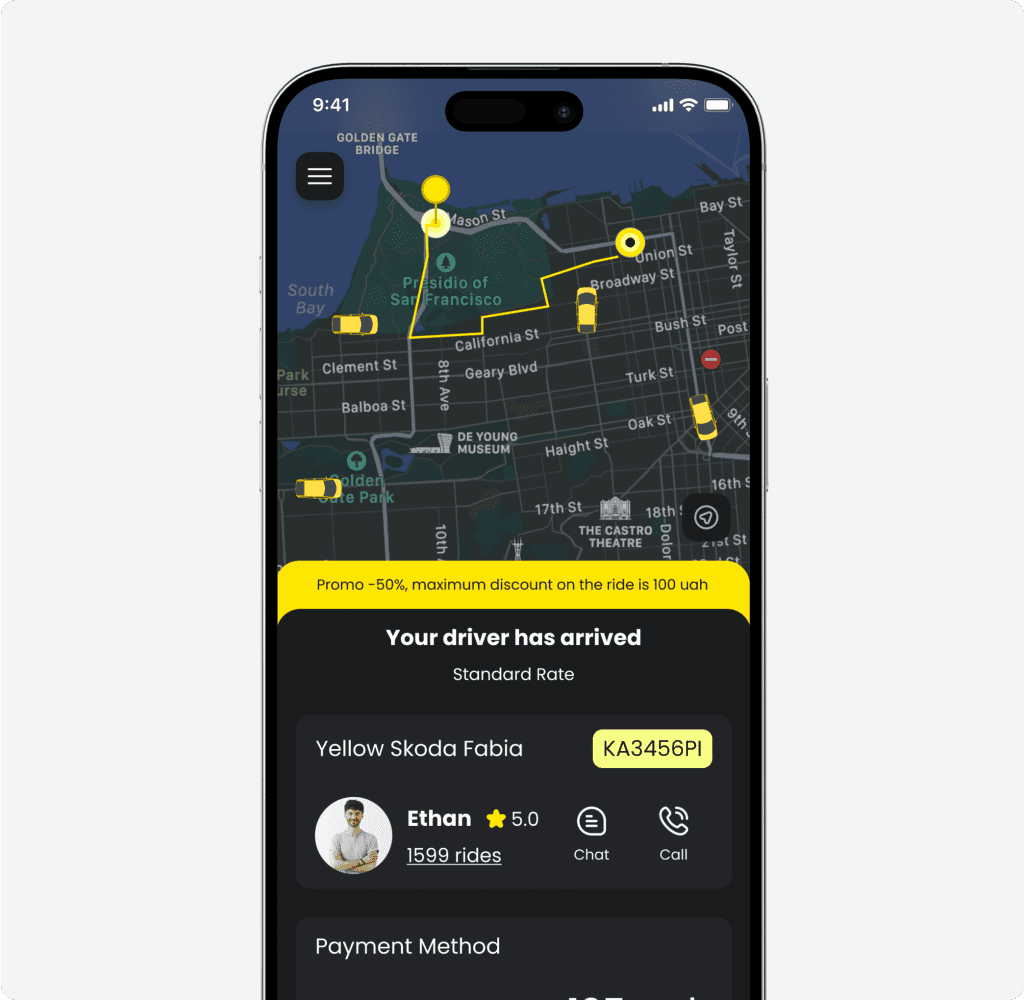
Testing is crucial to app success. Learn how to test a mobile app the right way.
Deployment to App Stores
We upload your app to Google Play and the Apple App Store.
Your goal here is to create a catchy description, use screenshots, and highlight your app’s benefits to attract more users.
Post-Launch Support
Your work doesn’t end after launch. With regular updates, you will keep your app competitive and your users happy.
You need to monitor reviews and ratings on the app stores. Are there common complaints? Fix them quickly.
Our specialists are here to fix bugs and release updates.
As more people use your app, unexpected issues might appear. Address these and keep improving.
Once your app is stable, we can move further with taxi app development and add features that users want, like scheduled rides or ride-sharing options.
How Much Does Taxi App Development Cost?
Taxi app development is a big investment, so obviously, you want to know where your money will go to better budget and make smart decisions.
The cost of a taxi app depends on several factors, including the features you want, the complexity of the app, and the development approach you choose.
Let’s dive into the details.
Key Cost Factors in Taxi App Development
1. Features and Functionality
The features you include have the biggest impact on cost.
- Passenger-side Features: Ride booking, fare estimation, live tracking, payment integration, ratings/reviews.
- Driver-side Features: Availability toggles, navigation, earnings dashboard, ride history.
- Admin Panel: Fleet management, driver monitoring, analytics, and reporting.
The more advanced features you add — like AI-based route optimization, multi-language support, or dynamic pricing — the higher the cost.
2. Platform Choice
- Single Platform (iOS or Android): Developing for just one platform is cheaper.
- Cross-Platform (React Native, Flutter): Saves time and money compared to developing separate native apps but may have limitations with highly complex features.
- Native Apps (iOS and Android): Offers the best performance but is more expensive because each platform requires a separate development process.
Curious about the price of building an iOS app? Our iOS app development cost guide breaks it down.
3. Design Complexity
A basic design is less expensive, but to stand out in a competitive market, you’ll likely need an engaging, user-friendly design that requires more time and expertise.
Custom animations, unique user flows, or complex layouts can raise costs. 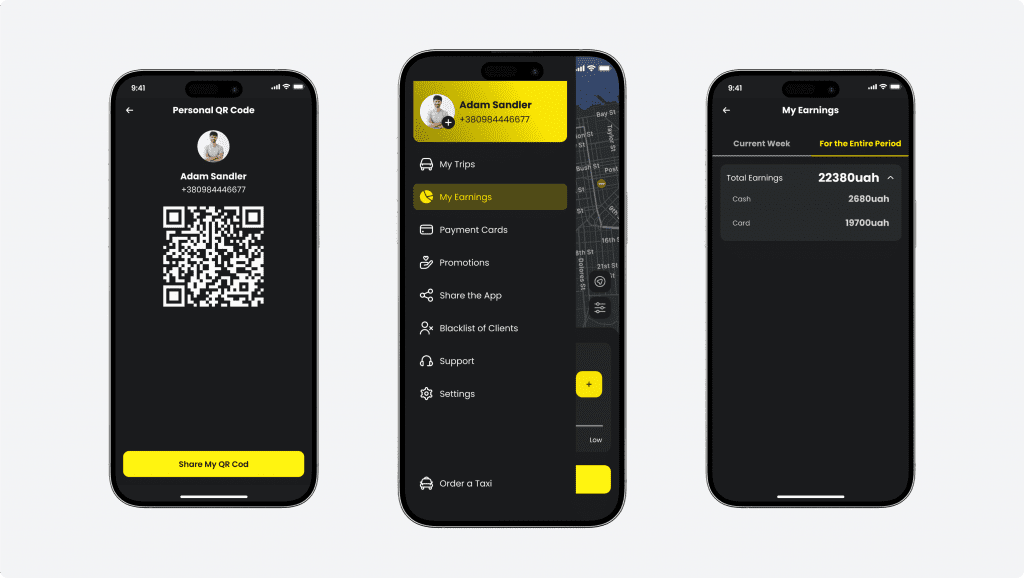
4. Backend Infrastructure
Taxi apps rely on a robust backend to handle real-time ride tracking, notifications, and payments.
You’ll need servers, databases, and APIs to ensure the app runs smoothly.
A scalable infrastructure will cost more upfront but is essential for long-term growth.
5. Team Composition
The team size and expertise level impact your costs. A typical team includes:
- UI/UX designer
- Backend developer
- Mobile app developers
- QA testers
- Project manager
You’ll also need to decide whether to hire freelancers, a dedicated development team, or an in-house team.
Hiring an experienced development partner often provides the best balance of cost and quality.
Explore the benefits and drawbacks of each one in our guide on in-house development vs outsourcing.
6. Location of the Development Team
Taxi app development services vary greatly by location.
Here is a quick break down of developers charges in different regions:
- North America/Western Europe: $100–$200/hour
- Eastern Europe (e.g., Ukraine, Poland): $40–$80/hour
- Asia (e.g., India, Vietnam): $20–$50/hour
Typical Cost Breakdown
Here’s a rough estimate of what each stage of development could cost, assuming you’re working with an experienced offshore development team charging around $50/hour:
| Stage | Estimated Cost |
|---|---|
| Discovery & Planning | $5,000–$10,000 |
| UI/UX Design | $8,000–$15,000 |
| Backend Development | $20,000–$40,000 |
| Frontend Development | $15,000–$30,000 |
| QA Testing & Launch | $10,000–$20,000 |
Total Cost for MVP: $50,000–$100,000
For a full-featured app with advanced functionalities, the cost could go up to $150,000 or more.
Feel free to dive into the cost of Uber-like app for more insights.
Top Technologies Used in Taxi App Development
Your tech choices can significantly impact your taxi app performance, scalability, and cost.
| Category | Technology | Why It’s Needed |
|---|---|---|
| Frontend Development | Native Development: Swift for iOS and Kotlin for Android. |
|
| Cross-Platform Development: React Native or Flutter. |
| |
| Backend Development | Node.js or Ruby on Rails |
|
| Database Management: MongoDB (NoSQL) or PostgreSQL (SQL). |
| |
| APIs | Google Maps API |
|
| Twilio or Nexmo:. |
| |
| Stripe or PayPal |
| |
| Cloud Hosting | AWS (Amazon Web Services) or Google Cloud Platform (GCP). |
|
| DevOps Tools | Docker |
|
| Kubernetes |
| |
| Authentication Tools | Firebase Authentication or Auth0 |
|
| Analytics Tools | Google Analytics or Mixpanel |
|
| Push Notifications | Firebase Cloud Messaging (FCM) or OneSignal |
|
| Testing Tools | Appium or Selenium |
|
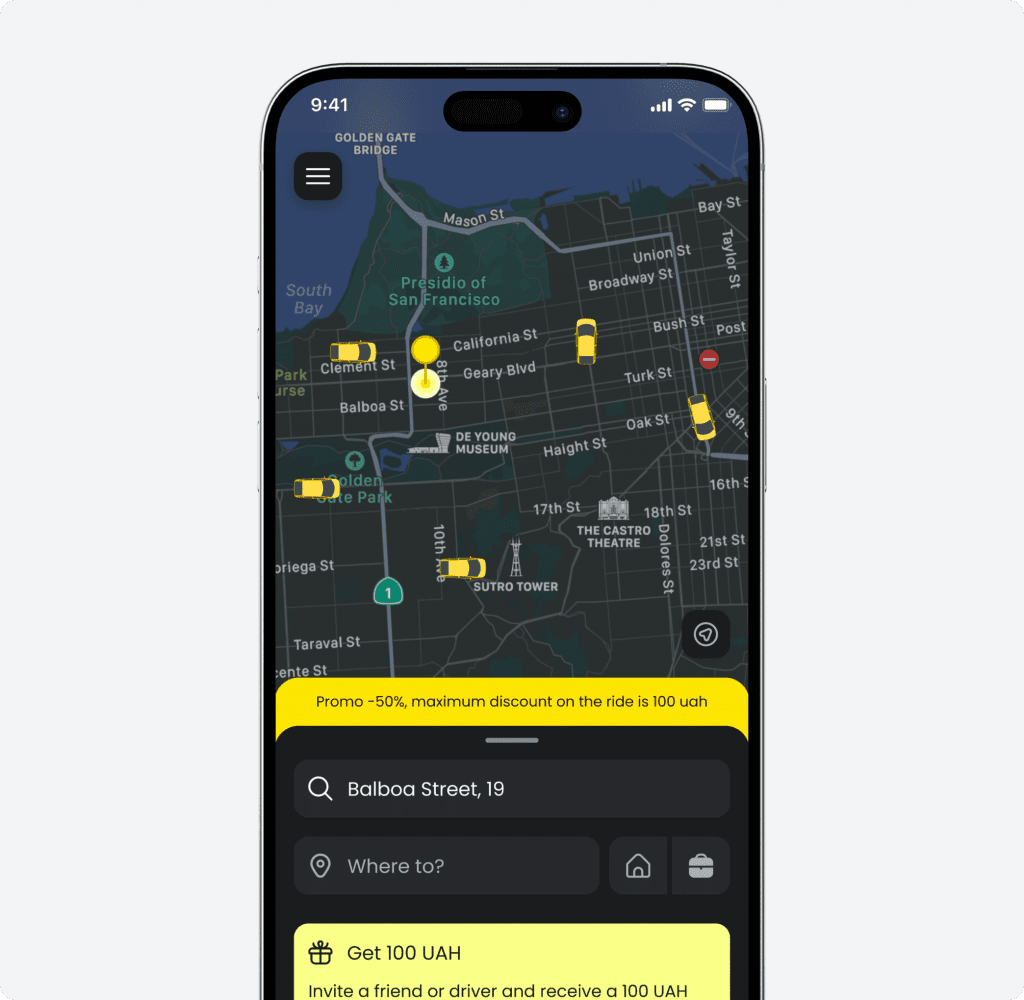
Revenue Models for Taxi App Development
Developing a captivating taxi booking app is one step in the journey. The real test lies in creating a sustainable revenue stream.
You have several options to choose from, depending on your business goals and target audience.
Here’s a breakdown of the most common and effective revenue models:
1. Ride Commission Model
This is the most popular revenue model for taxi apps like Uber and Lyft.
You charge a percentage of every ride booked through your platform.
For instance, if the total fare is $20 and your commission rate is 20%, you earn $4 from that ride.
This revenue model ensures steady revenue as long as rides are happening as it aligns your earnings with app usage.
- Tip: You can set different commission rates based on factors like location, demand, or driver tiers.
2. Dynamic Pricing (Surge Pricing)
You increase ride fares during peak times, bad weather, or high demand. A portion of the surge fare goes directly to your revenue.
In this case, during peak hours, you may charge double the standard fare, earning a higher commission.
This model encourages drivers to be active during high-demand periods and boosts earnings for the app.
- Tip: Communicate surge pricing clearly to users to avoid backlash.
3. Subscription Plans for Drivers
Offer drivers a flat fee to use your app without commission on rides.
For example, a driver pays $300/month for unlimited ride bookings.
Driver plan gives you a predictable income and is great for high volume drivers who want to avoid commission fees.
- Tip: Add perks like priority bookings or premium support for subscribed drivers.
4. Advertising and Partnerships
Let third party businesses advertise in your app or partner with local businesses for promotions.
You can display ads for restaurants, retail stores or events in the passenger app. Or offer promo codes for rides to specific destinations (like a mall or event).
This gives you additional revenue streams without relying on ride commissions.
Looking to create a food app? Check out our comprehensive restaurant app development guide.
- Tip: Don’t overwhelm users with ads — keep them relevant and non-intrusive.
5. In-App Purchases
Here you offer passengers add-ons for an extra fee.
We are talking about options like choosing a preferred driver, premium cars, priority booking or extra luggage space.
This practice enhances user experience while generating incremental revenue.
- Tip: Test these features with focus groups to ensure they’re valuable to users.
6. Corporate Partnerships
You can partner with businesses to provide ride services for their employees. You will charge companies a flat fee or per-ride fee.
For example, you offer corporate clients discounted bulk ride packages for employee commutes or airport pickups.
This revenue model helps you tap into a reliable, high-volume market segment.
- Tip: Develop a separate portal for corporate bookings to streamline operations.
7. Loyalty Programs and Memberships
Using this model, you offer a subscription or loyalty program to passengers for benefits like discounted rides or priority booking.
For instance, passengers pay $9.99/month for unlimited discounts or free cancellations.
This revenue model encourages long-term app usage and builds customer loyalty.
- Tip: Analyze your user base to price memberships attractively.
These are the most popular revenue models for your taxi booking app.
To decide which revenue models suit your taxi app, consider your target audience and scale of operations.
You also need to investigate what revenue models are your competitors using, maybe there are any gaps you can fill.
Many successful taxi apps combine several models, like ride commissions, surge pricing, and corporate partnerships, to maximize your earnings. 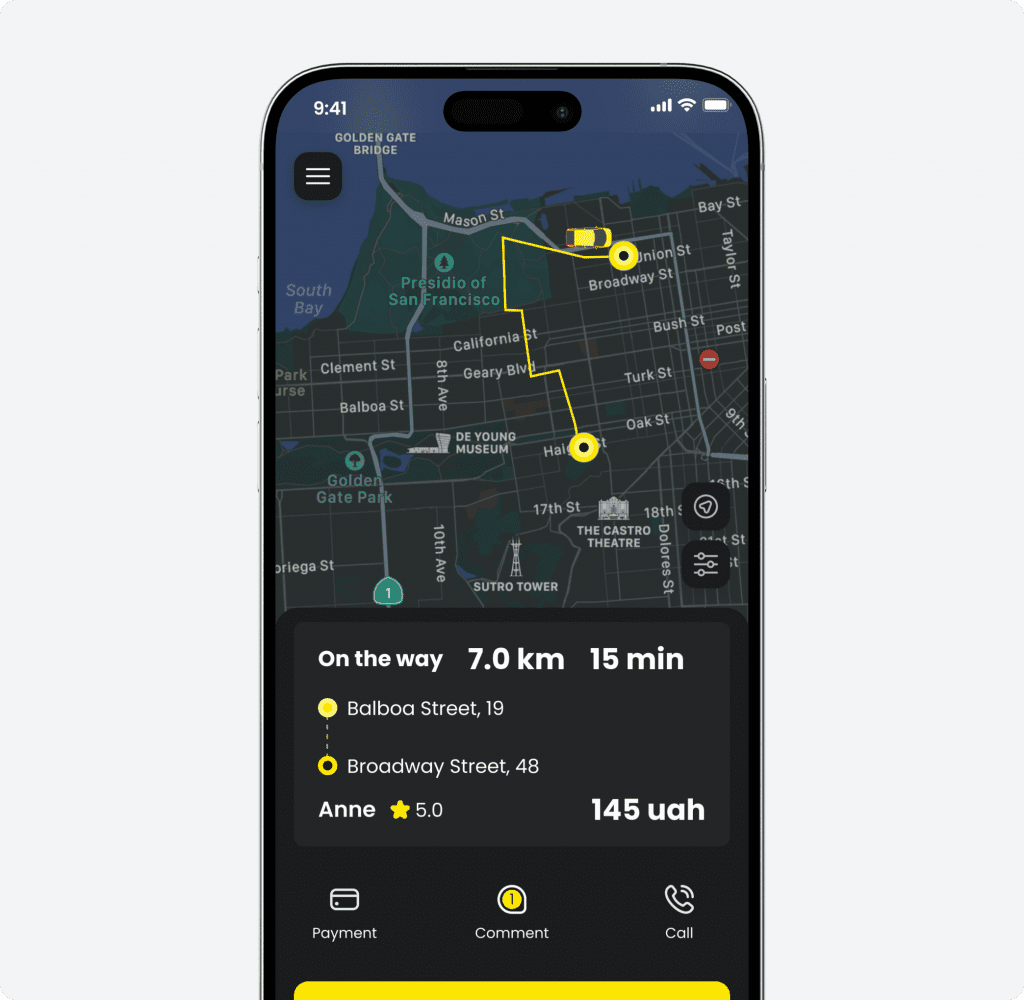
Turning your app idea into reality? Learn how to start an app step by step.
Role of AI and Machine Learning in Taxi App Development
AI and Machine Learning make taxi apps smarter, more efficient, and easier to use.
There are several ways in which you can benefit from AI in your taxi app development.
Route Optimization
- AI analyzes traffic data in real time, helping drivers choose the fastest routes. This saves time and provides a better experience for passengers.
Dynamic Pricing
- ML adjusts fares based on demand, traffic, or time of day. For example, prices might increase slightly during peak hours or bad weather to balance demand and supply.
Predictive Analytics
- AI predicts high-demand areas and guides drivers there, reducing wait times for passengers and increasing earning opportunities for drivers.
Safety Monitoring
- AI can track driver behavior, identifying issues like speeding or harsh braking, which helps maintain safe driving standards.
AI-Powered Chatbots
- These provide instant support to users by answering FAQs, assisting with booking issues or offering updates without needing human intervention.
If you are looking for ways to enhance your development, AI is a game-changer. Check out the AI development tools we use for software development. These tools enhance our projects and streamline development workflow.
Explore our SaaS services today
Ready to build your app? Discover how to outsource mobile app development and work with top-notch experts.
Summing Up
Thinking of launching your own taxi app?
You don’t need to take on the big players to succeed. Instead, focus on unique features or solving specific problems that matter to your users.
We can help you start small with an MVP to test your concept and then grow into a full-featured app your customers will love.
Let’s chat about your vision and map out the most affordable and effective way to bring it to life.
Need a reliable development team? Here’s your step-by-step guide to hiring a dedicated team in Ukraine.




